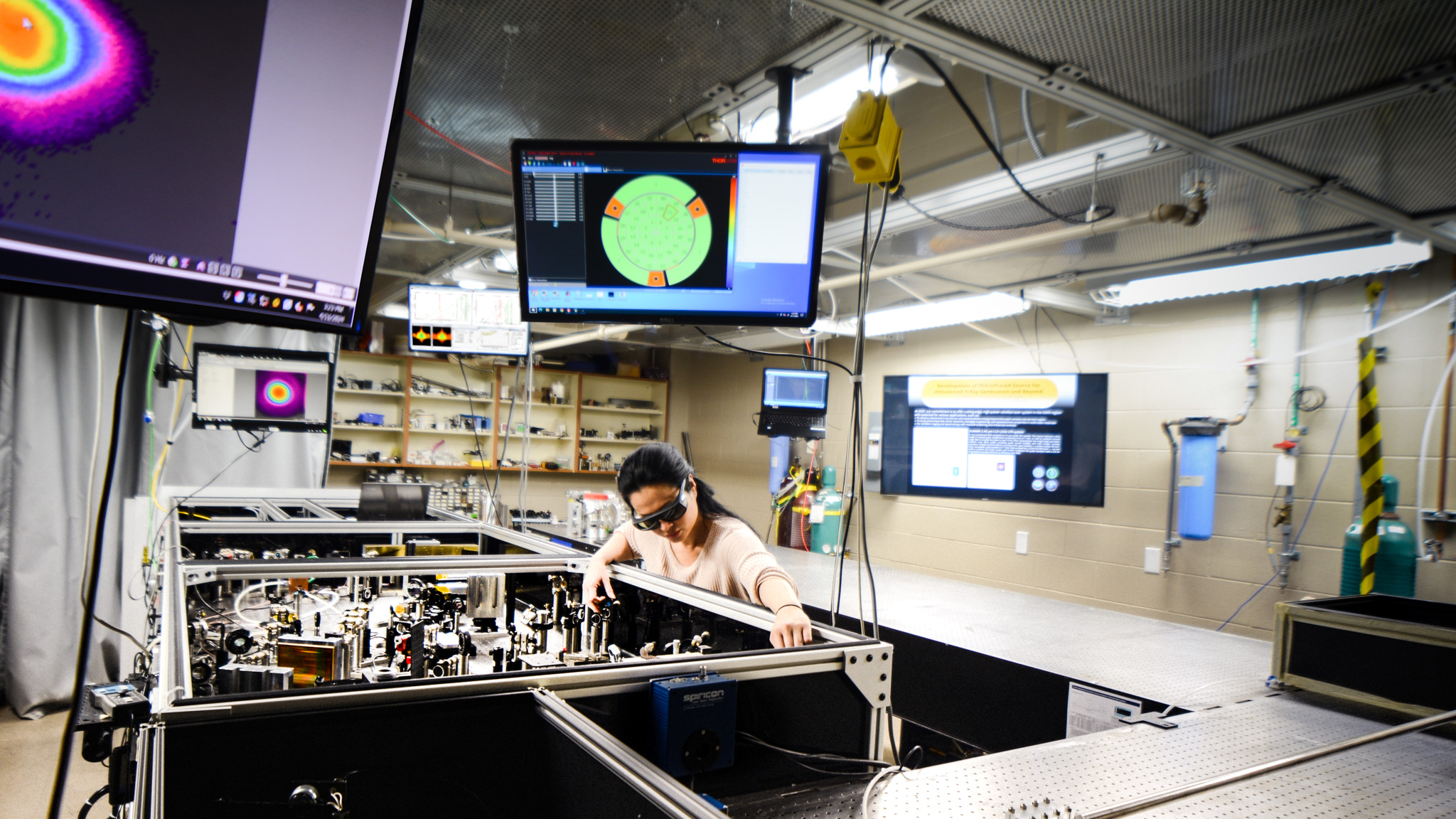Please address
inquiries to:
Email: Li.Fang@ucf.edu
Capabilities
The University of Central Florida houses a wide array of ultrafast laser systems operating in the regimes of long wavelength and high-average power, most of which fall under the umbrella of iFAST (Institute for the Frontier of Attosecond Science and Technology). The lasers are coupled to ultrahigh vacuum setups for generating and characterizing attosecond XUV and soft x-ray pulses and other secondary sources. The team also has expertise in the simulation of attosecond photoionization processes. Recent accomplishments of the team include the generation of 53 attosecond soft x-ray pulses, 50-fold compression of ytterbium-doped laser amplifiers to below two optical cycles, and attosecond transient absorption spectroscopy in the soft x-ray “water window”.
The iFAST CPA is a Cr:ZnSe-based chirped pulse amplifier that generates pulses of 2.45 µm center wavelength, 80 fs pulse duration, 6.5 mJ pulse energy at a repetition rate of 1 kHz. The seed is from an optical parametric amplifier pumped by a commercial Yb:KGW laser. Upon user’s request, the CPA output can be further compressed to below ~20 fs using hollow-core fiber. The contact person for the iFAST lasers is Prof. Yi Wu (Yi.Wu@ucf.edu).


Other lasers available on-site include Yb:solid-state and Yb:fiber amplifiers, offering sub-millijoule pulse energies at repetition rates up to 200 kHz and pulse durations as short as 1.5 optical cycles. The contact persons for these laser sources are Dr. Li Fang (Li.Fang@ucf.edu) and Dr. Madhab Neupane (Madhab.Neupane@ucf.edu).
| Parameter | iFAST CPA |
LUMAS Yb:SS |
AMOP Yb:fiber |
|---|---|---|---|
| Center Wavelength | 2.45 µm | 1.03 µm | 1.03 µm |
| Pulse duration (FWHM) | 80 fs | 250 fs | <10 fs |
| Pulse energy | 6.5 mJ | 0.4 mJ | >0.2 mJ |
| Repetition Rate | 1 kHz | 50 kHz | 200 kHz |
| Carrier-Envelope Phase Stability | TBD | N/A | N/A |
The facility encompasses a femtosecond infrared laser system, a beamline for attosecond XUV and soft x-rays, and an attosecond transient absorption spectrometer system. Laser Diagnostics include MWIR, SWIR and UV/VIS spectrometers, single-shot and scanning FROG for NIR and MWIR, MWIR beam profiler.
The group of Luca Argenti develops and applies state-of-the-art ab initio and model software to the ionization of atoms and molecules under the action of arbitrary and moderately intense sequences of ultrashort pulses of ionizing radiation, with an emphasis on the accurate description of electronic correlation in the ionization continuum in general and on the dynamics of metastable states in particular. Dr. Argenti's research has supported the experimental effort of several laboratories in the US, Japan, and Europe that employ attosecond photoelectron and transient absorption spectroscopies.

Contacts
Please address
inquiries to:
Email: Li.Fang@ucf.edu

